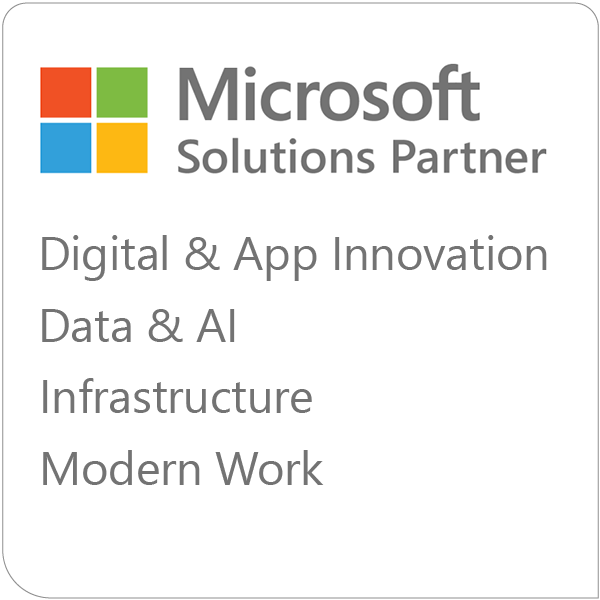We all get by with a little help from our friends. In business, that often means augmenting your in-house capabilities with technology services provided by a partner.
The right IT outsourcing partner can help you develop new solutions, implement software, monitor and optimize systems, and even find new talent for your team. They can do the work that you don’t have the expertise or the time to do in-house and they can do it cost-effectively.
For the best results, we suggest seeking out partners that offer multiple engagement options. In this article, we’ll cover four common ways that you can work with a technology partner: project-based, dedicated team, managed services, and staff augmentation.
How can you engage an IT outsourcing partner?
Different problems require different solutions. For example, if you need custom software developed, it may make sense to have a fixed-length, fixed-price agreement or one with a well-defined scope and an estimate provided in a statement of work (SOW). The software development company creates your application and you pay for it. This would be called a project-based engagement.
You could also choose the dedicated team option, in which you have an agile team of professionals assigned to work on your project. Dedicated teams are ideal whether you're developing new software or enhancing an existing system.
Once your software is up and running, you might need someone to provide support and occasional troubleshooting. Instead of a flat fee, it now makes sense to pay a monthly rate to a support team for a few hours of work per month. Then, as your business grows, so do your support needs, so you switch to a different rate that offers continuous monitoring of your systems. These are examples of managed services engagements.
Finally, if you have a variety of projects you can engage a staff augmentation service to find temporary employees to join your business.
At any given time, most companies are working on multiple projects and initiatives. And technology needs are constantly changing. Ideally, the same trusted, long-term partner can be with you through it all. That's why it's important to find an IT outsourcing company that covers each of the following models of engagement.
Let’s look at four ways that you can work with an IT outsourcing partner to achieve your goals.
Engagement model 1: Project-based
In a project-based (also called deliverables-based) engagement model, you contract with an IT outsourcing partner to provide a specific outcome or set of deliverables. This type of engagement typically involves a pre-determined timeline and scope.
Some examples of projects that fit well with project-based consulting include:
- Developing a custom software application
- Building a new website
- Assessing your current systems and providing a report
- Performing cloud migration
What’s the process for project-based engagement?
The exact process will depend on who you work with, but any good partner will start by taking the time to understand your business and your needs. For our clients, this is a fixed-size, billable engagement called "discovery," in which we work with you to define the project requirements and scope. At the end, we have a statement of work (SOW) and a cost estimate.
In this process, we go through the following steps:
- Understand the opportunity
We meet with the client to learn about the organization and what opportunity the client is looking to capitalize on. In other words, their current pain points, why this project is important to them, and what they want to achieve. We’ll define key objectives and create a budget approximation. - Discover the requirements
Now it’s time to get into more detail. We identify key players and walk through the client’s existing systems, process flows, constraints, and more. In the end, we’ll have a list of prioritized high-level requirements. - Design the solution
Next, we design a solution vision and technology plan for the client’s opportunity. We'll validate our solution with the client along the way and continue to refine the project timeline and estimate. - Plan the delivery
Once everyone is aligned on the vision, a final estimate, a plan for delivery, and the SOW will be put together and given to the client for review.
What to look for in a project-based consultant
You have a lot of great ideas for systems and features you need—years’ worth of ideas, probably.
But it’s also important that you start seeing value as soon as possible. The right partner can make sure that your project is providing value quickly (while also developing a plan to achieve your longer-term goals).
When we develop custom software for you, that’s part of what we look for in the discovery process. We’ll plan an initial release that’s high-quality and can attract early-adopter customers to validate the product idea but that won’t take too long to create. After the initial release, we’ll continue to iterate and expand on that value.
Before embarking on a deliverables-based project, make sure your IT outsourcing partner is focused on minimizing business risk through early value delivery.
Engagement model 2: Dedicated team (managed capacity)
The dedicated development team model (also called managed capacity or managed team) is what it sounds like—you have a dedicated agile team of professionals assigned to work on your projects. You can set the priorities for the team within the bounds of the contract, which usually includes a set number of person-hours per month, and your IT outsourcing partner will manage the work.
A dedicated team lets you benefit from the skills of expert developers, IT pros, testers, project managers, and more without any recruiting expenses or time-consuming onboarding. You don't have to worry about whether your team is working seamlessly or meeting deadlines—the IT outsourcing company has it under control.
The dedicated development team model and the project-based model can both be used for developing new software. If you already have the system in place and are looking for continuous development, a dedicated team is the way to go for ongoing enhancement and maintenance.
What to look for in a dedicated team service
As we talked about in the section about project-based engagements, it’s important to find a partner that focuses on speed to value. In other words, when we work with you, we’re not interested in billing you for as much work as possible right away—instead, we’ll help you prioritize the most important features for an initial release.
After the initial release, some IT outsourcing companies will only work with you if you purchase another large package. It’s better to look for one that offers a range of options. For example, Emergent offers managed capacity starting at just 8 hours per month. We’ll work with you to make sure we’re using that time to bring you the most value.
One of the key advantages of this engagement model is the wide range of skillsets a dedicated team can possess. Make sure the IT outsourcing company you work with can fill the team with the right roles and that it’s sized appropriately, so that you’re never paying for more than you need. Sometimes that might mean including a combination of full-time and part-time roles.
You can always ask about similar projects that your potential technology partner has handled in the past.
Engagement model 3: Managed services
This engagement model involves a long-term, ongoing engagement. Your technology partner will come to deeply understand your business and your environment. They’ll work as an extension of your team to keep everything running smoothly. Some examples of ongoing services include:
- Database administration
- Cloud infrastructure support
- Custom software support
What options are there for ongoing engagement?
Engagements under the managed services model are flexible and scalable.
Sometimes all you need is someone to respond to critical issues. With this kind of managed services package, your IT outsourcing partner might monitor your system for outages or simply be available when you report an issue.
You might also be looking for a more hands-on approach, in which your technology partner takes ownership of your system, proactively monitoring it for risks before those risks turn into real issues. This kind of service could involve things like advanced environment monitoring, patching, and regular health checks.
As your needs change, you can scale your level of managed services accordingly. The cost will usually depend on factors like how much on-call time you require and the response time you expect.
What to look for in a managed services partner
To provide the best ongoing service, it’s important that your technology partner knows your system inside and out. Make sure they have a process for gathering this information, especially for complex systems.
For example, at Emergent Software, we have a four-step process:
- Gather insight
The client provides a summary of their business, the system’s impact on operations, and a demo of its key functionality. - Gain access
Once we’ve learned about the system, we gain access to the infrastructure, source code, development environments, and work management system. An initial review is performed. - Perform audit
We assess system security, performance, overall quality, integrations, and tech debt. The audit results are presented to a client along with a remediation plan. - Adopt system
After any critical issues are resolved, we adopt the system. We create support documentation, set up monitoring, and educate the client on our ticketing system. We then host a final meeting to transition support to our team.
Engagement model 4: Staff augmentation
Tech talent can be hard to find and hire, especially if you lack an internal recruiting team or if you don’t have the technical expertise you need to vet candidates. And sometimes you don’t need a long-term employee, just someone to join your team for several months. Staff augmentation can make sure that you have the right people for the right amount of time.
How does staff augmentation work?
If you choose the staff augmentation model of engagement, your IT outsourcing partner recruits and hires people to join your company for a fixed period. These professionals are technically employed by the IT outsourcing company. However, they function as full members of your team for the length of their contract.
IT staff augmentation employees aren’t just anybody—your staffing partner will ensure that each new team member fills the specific niche you require. Much like a dedicated team, they already have the skills they need to add value to your business. But staff augmentation puts more control in your hands. Once someone is recruited for your contract position, you’ll be able to choose the direction of their work like you would with any other employee.
What to look for in a staff augmentation service
Any staff augmentation service can find you temp employees—but then, you could probably find them yourself. The best services have a thorough vetting process to ensure that the candidates they pass on to you are a great fit.
For example, at Emergent Software, we test candidates’ skills with tests like:
- Software engineers complete a 4-hour challenge modeling a small custom software project.
- Database developers complete a 4-hour challenge including ETL, data modelling, performance tuning and reporting tasks.
- Quality assurance engineers are given a set of use cases and asked to test an intentionally broken and incomplete piece of software.
- Business analysts and project managers are required to work off a set of requirements, ask questions for further detail, provide descriptions of the solution, and break it down into epics, features, and user stories.
That way you don’t waste your time interviewing candidates who lack the real-world skills you need.
Work with us
As you surely noticed as we went through the engagement models, Emergent Software offers all four. We can partner with you for project-based work, dedicated team, managed services, staff augmentation, or a combination of models.
To find out more about how we can help you achieve your goals, get in touch today.






